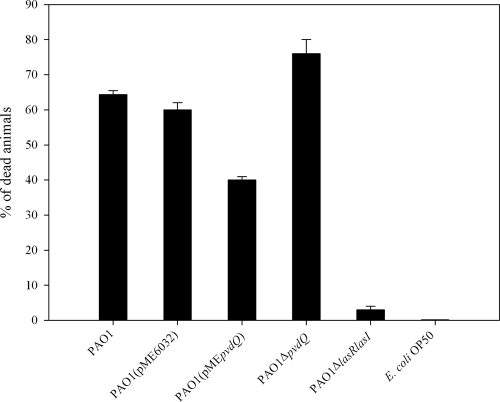FIG. 2.
Killing kinetics of PAO1, PAO1(pME6032), PAO1 Δpvd, PAO1(pMEpvdQ), and PAO1 ΔlasR ΔlasI. A higher-sensitivity assay was used to study the killing rates of the different mutants. Here we present the percentage of dead animals exposed for a period of 4 days to the respective mutant. After 72 h of exposure to the wild-type strain, 65% of the animals died from accumulation of toxic bacteria in their intestines. The control strain PAO1(pME6032) resulted in 61% of the animals dying, in contrast to PAO1(pMEpvdQ), which killed only about 40% at the same time point. Interestingly, more than 65% of the worms survived the exposure to this strain and continued to use it as a food source, showing a healthy growth rate with no alterations in their behavior. The ΔpvdQ mutant proved to be more pathogenic than the wild type, resulting in the death of about 76% of the population. The quorum-sensing-negative mutant PAO1 ΔlasR ΔlasI and the E. coli OP50 used as a background control did not exert any toxicity to the animals.

